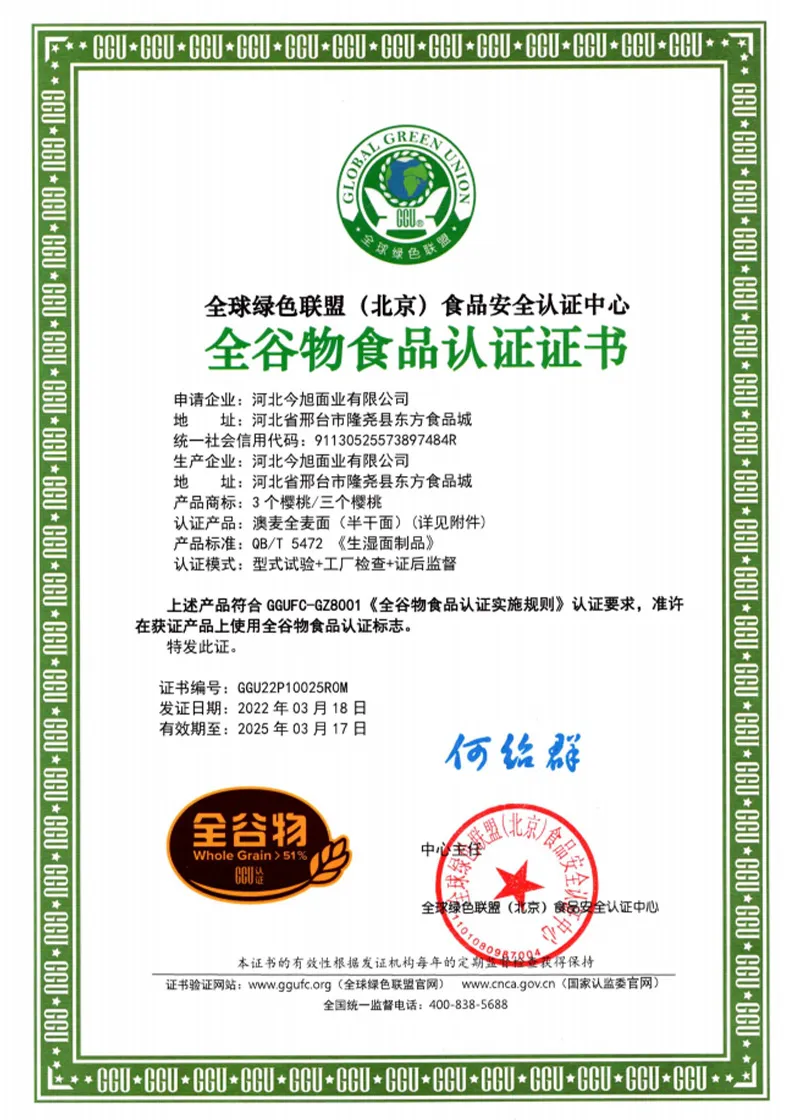hand pulled noodles
The Art of Hand-Pulled Noodles
Hand-pulled noodles, known as lamian in Chinese, are not just a staple food; they are a cultural emblem, a labor of love, and an art form. Originating from the Chinese province of Shaanxi, this ancient method of creating noodles showcases the skill and dedication of noodle-makers who have honed their craft over generations. The process, involving stretching and folding the dough until it transforms into long, thin strands, is both a physical and artistic endeavor that requires practice, precision, and patience.
At its core, the creation of hand-pulled noodles starts with a simple mixture of flour, water, and salt. The flour's quality plays a significant role in the final product. Most noodle-makers prefer using high-gluten flour as it provides the elasticity required for stretching. After mixing the ingredients into a dough, the dough is kneaded until it reaches a smooth consistency, and then it is allowed to rest. This resting period is crucial as it helps to relax the gluten, making the dough easier to stretch later.
The Art of Hand-Pulled Noodles
The beauty of hand-pulled noodles lies not only in the texture but also in the versatility of the noodle itself. Once formed, noodles can be cooked in various ways. They can be boiled in water for a simple dish or dunked into a rich broth to create a hearty soup. They can be stir-fried with vegetables and meats or served cold with chili oil and sesame sauce, making them adaptable to many culinary styles. Popular dishes featuring hand-pulled noodles include Lanzhou beef noodles, where the noodles are served with tender beef, broth, and aromatic herbs, and dried noodles tossed in spicy sauce—a street food favorite.
hand pulled noodles

In recent years, the global appreciation for Asian cuisine has brought hand-pulled noodles into mainstream awareness. Restaurants specializing in this craft have sprung up worldwide, often emphasizing the theatrical aspect of noodle pulling. Diners are treated to live demonstrations where chefs display their skills, pulling and tossing the dough in an impressive, almost balletic manner. This spectacle not only highlights the labor-intensive process but also connects diners to the rich culinary traditions of the East.
Moreover, hand-pulled noodles carry with them a narrative of cultural heritage. They represent not only the skill of individual chefs but also the collective memory of communities who have cherished these practices through the ages. Family recipes passed down through generations often accompany the dishes, infusing them with personal stories and histories. In many parts of China, noodles are served during significant celebrations, symbolizing longevity and good fortune—further cementing their cultural significance.
As hand-pulled noodles continue to gain popularity globally, they also invite conversations about food as an experience. The tactile nature of pulling noodles encourages interaction, whether it’s cooking with family, sharing a meal with friends, or witnessing the skill in action at a restaurant. This connection to the process of making and enjoying food elevates the dining experience beyond mere consumption into something shared and communal.
In conclusion, hand-pulled noodles are more than just a culinary delight; they are a reflection of culture, tradition, and artistry. Each strand tells a story woven together with the threads of history and community. As we continue to embrace and appreciate diverse cuisines, hand-pulled noodles remind us of the beauty and complexity of food—an invitation to slow down and savor each bite. So, the next time you enjoy a bowl of these delightful noodles, take a moment to appreciate not just the taste but the rich heritage behind every strand.
-
Unleash Your Inner Chef with Delectable Italian Pasta CreationsNewsAug.01,2025
-
Savor Health and Flavor: Irresistible Soba Noodles for Sale Await!NewsAug.01,2025
-
Nourish Your Body with Premium Organic Ramen - A Culinary Delight AwaitsNewsAug.01,2025
-
Elevate Your Dishes with Our Exquisite Kinds of Egg NoodlesNewsAug.01,2025
-
Dive into Flavorful Convenience with Our Ramen OfferingsNewsAug.01,2025
-
Discover Exquisite Types of Naengmyeon and Chilled Soba NoodlesNewsAug.01,2025
-
Is Whole Wheat Pasta Healthy?NewsMay.30,2025
Browse qua the following product new the we

















































































































